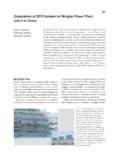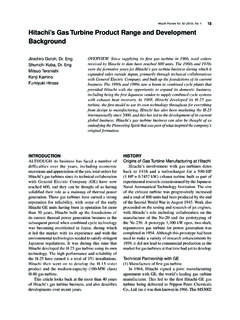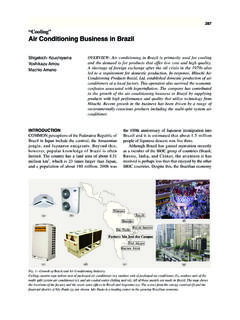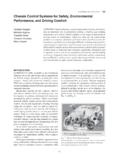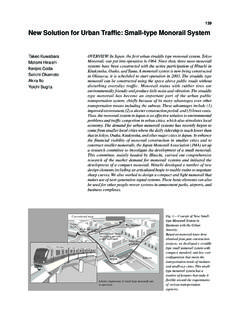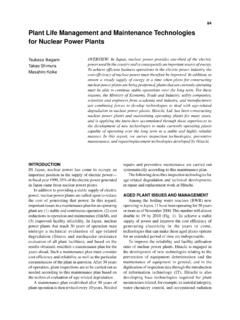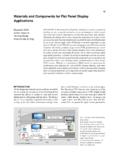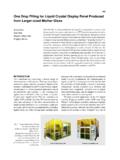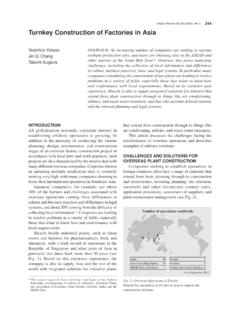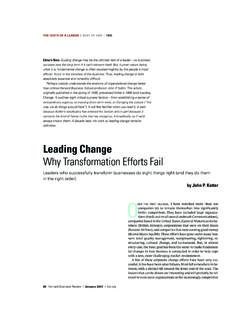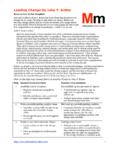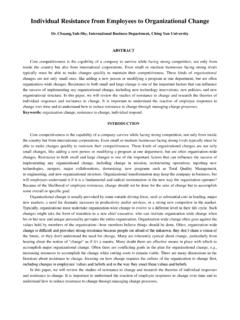Transcription of COVER STRY Collaoratie reation hrough obal D …
1 COVER STORY Collaborative Creation through Global R& Harayama, Member Council for Science, Technology and Innovation, Cabinet Office, JapanWe are now in a new era, one in which innovation driven by enabling technologies such as IoT, AI, and robotics are bringing significant changes to the economy and society. In anticipation of global trends, the 5th Science and Technology Basic Plan, adopted by the Japanese Cabinet in January 2016, presented Society as a core concept. It was identified as a strategic part of the Basic Policy on Economic and Fiscal Management and Reform 2016, which is a basic policy for economic fiscal management and reform, and furthermore as one of the growth strategies for the Council on Investments for the Future, which was established in September 2016 as a headquarters for innovation strategy to enhance Japan s growth potential.
2 Why is the Japanese government promoting Society now, and what is the government s vision of the society on which Japan s future nation will be built? We asked Yuko Harayama, Executive Member of the Council for Science, Technology and Innovation, about the pioneering super smart society aimed for by Society : Aiming for a New Human-centered SocietyJapan s Science and Technology Policies for Addressing Global Social ChallengesCreating Innovation that Helps Solve Social ChallengesFukuyama: As Deputy Director of the Directorate for Science, Technology and Industry in the Organisation for Economic Co-operation and Development (OECD), you have been in close con-tact with global trends.
3 When formulating the 5th Science and Technology Basic Plan, what aspects of these global trends have attracted your attention in the era of major change we re experiencing today?Harayama: I would say the dramatic changes that are fundamentally transforming society and the innovation that is bringing them about. The OECD played a leading role in triggering this, and in 2010, an Innovation Strategy was formulated and positioned as the core of our growth strategy. Joined Hitachi, Ltd. in 1987, and worked on the research and development of reliability technology for social infrastructure. Appointed General Manager of the Mechanical Engineering Center, Hitachi Research Laboratory in 2014, and took her current position in 2015.
4 She has a Doctor of Engineering, and is a mem-ber of the Japanese Society of Mechanical Engineering and the Science Council of FukuyamaGeneral Manager and CIO Technology Management Center, Technology Strategy Office, Research & Development Group, Hitachi, Review Vol. 66, No. 6 554 555 Open Innovation for Creating the is not limited to developed countries such as Japan. In emerging countries, too, movements are accelerating, relying on the complementarity between science and technology (S&T) and inno-vation to fuel economic growth. Even in developing countries, efforts toward bottom-up advance-ment of frugal innovation and inclusive innova-tion leading to economic growth are becoming a trend.
5 Furthermore, in September 2015 the United Nations adopted the 2030 Agenda for Sustainable Development, with Sustainable Development Goals (SDGs) as its core. In the SDGs as well, there are high expectations that innovation will play a central role in addressing these circumstances, new technologies and services are also created one after another through new combinations and/or integration into a system of existing technologies, and the world has been undergoing substantial transformation with innovation as a driving force. Yet, while this has greatly enhanced lifestyle convenience, it has also increased social complexity, and some nega-tive aspects of our new digital society are becom-ing apparent.
6 Looking at the current situation in Japan, reduced labor productivity is an urgent issue to address, and considering that the declining labor force will become more severe in the future, thoroughly strengthening industrial competitive-ness is becoming an urgent task as well. In light of these circumstances, when formulat-ing the 5th Science and Technology Basic Plan, we believed it was important not only to advocate for S&T development and growth in Japan, but also to equip our plan with the flexibility to respond to a world that is changing daily at tremendous speed. In this age of uncertainty, we cannot predict what the world will be like five years from now.
7 So, as a prerequisite for innovation, we decided to indicate the direction for our society to be pursued involving both industry and Harayama received a in Education from the University of Geneva in 1996 and a in Economics from the same institution in 1997, where she also taught as an Assistant Professor in the Department of Political Economy. She was a Fellow at the Research Institute of Economy, Trade & Industry (RIETI) in Japan, and in 2002 became a Professor in the Management of Science and Technology Department, Graduate School of Engineering, Tohoku University. From 2006, she spent two years as an Executive Member on the Council for Science and Technology Policy (CSTP) in the Japanese Cabinet Office, and from 2010 to 2012 served as Deputy Director of the OECD Directorate for Science, Technology and Industry.
8 She was appointed in March 2013 as an Executive Member on the Council for Science, Technology and Innovation (CSTI) of the Japanese Cabinet Office, and continues to serve there today. She is Professor Emeritus at Tohoku University, and in 2011 was inducted into the French National Order of the Legion of STORY Collaborative Creation through Global R& , movements toward incorporating new elements into existing technologies and knowl-edge, thereby designing and creating previously unknown business services are gaining visibility. As the rise of Uber* shows, traditional producer consumer dichotomies are also collapsing. As in the past, innovation functions as a driving force for economic activity, but its mechanisms are diversifying with a momentum that is overturn-ing existing industrial structures as well.
9 Behind all this is digitized information. In the future, innovative information-based technologies such as the Internet of Things (IoT), artificial intelligence (AI), and robotics are expected to generate new added value. We created the concept of Society under these circumstances, and by doing so, we intend to propose a new guiding principle for innovation from Japan to the a Core of People, Not Technology Fukuyama: Society aims at a super smart society. Is digitalization at its center?Harayama: Digitalization is a means, but we humans must remain central actors. Traditionally, innovation driven by technology has been respon-sible for social development, but in the future, we will reverse our way of thinking, focusing on how to build a society that makes us happy and pro-vides a sense of worth.
10 That is why we focus on the word society as the foundation for human , just what is Society Taking a long view of history, I think we can define Society as groups of people hunting and gathering in har-monious coexistence with nature, Society as forming groups based on agricultural cultivation, increasing organization and nation-building, Society is a society that promotes industrial-ization through the Industrial Revolution, making mass production possible, and Society as an information society that realizes increasing added value by connecting intangible assets as informa-tion networks. Society is an information soci-ety built upon Society , aiming for a prosperous human-centered society (see Figure 1).
